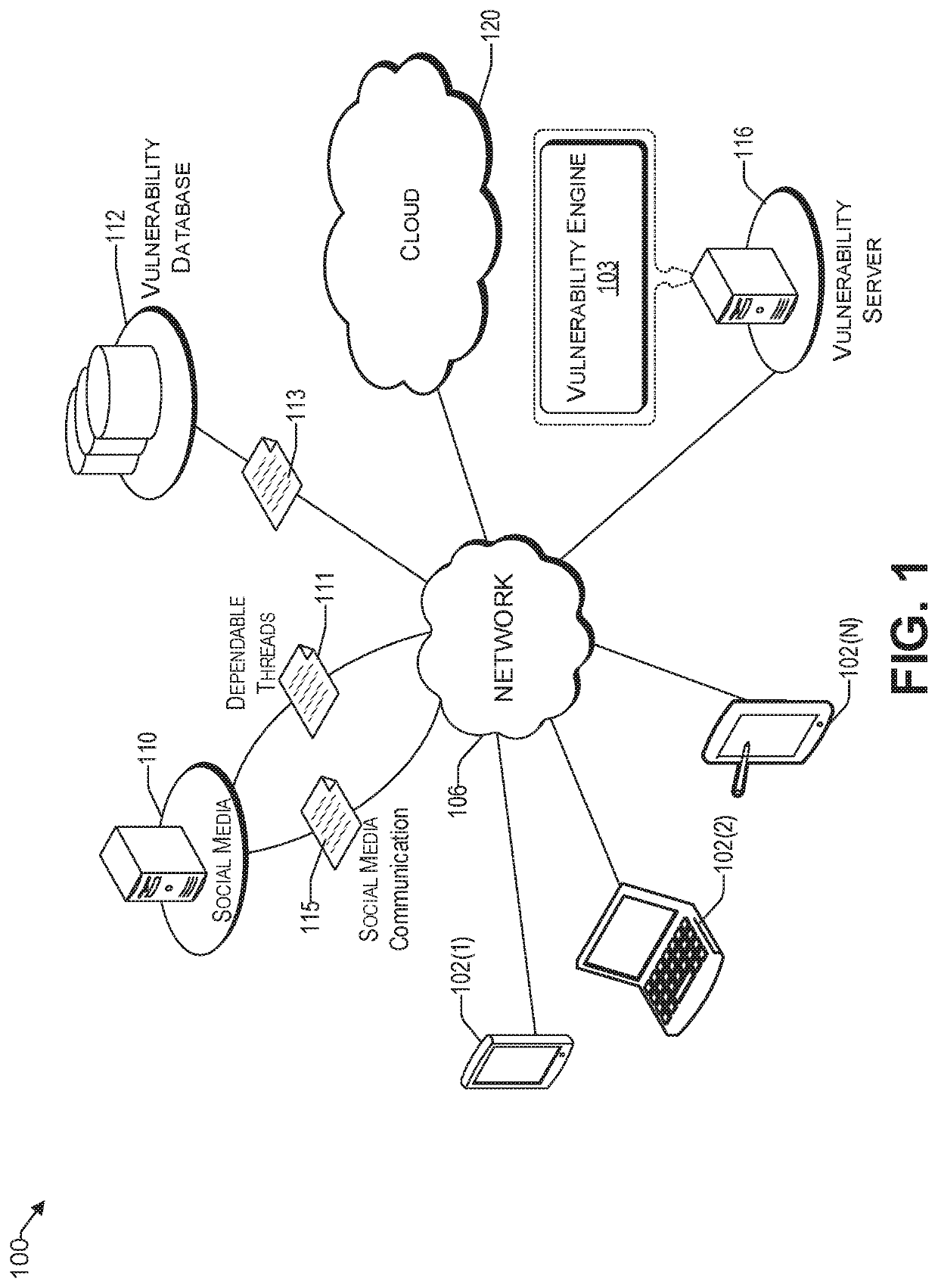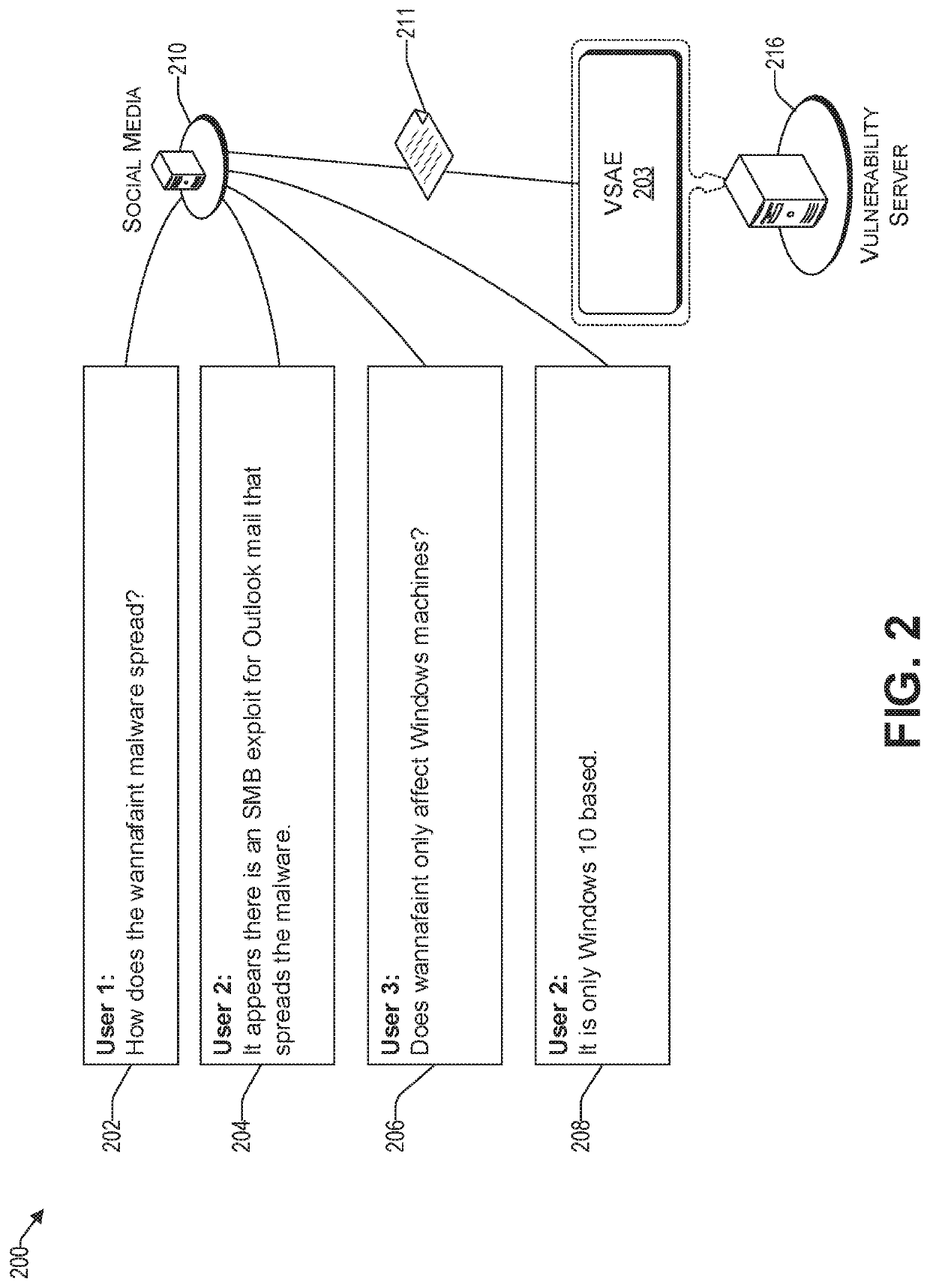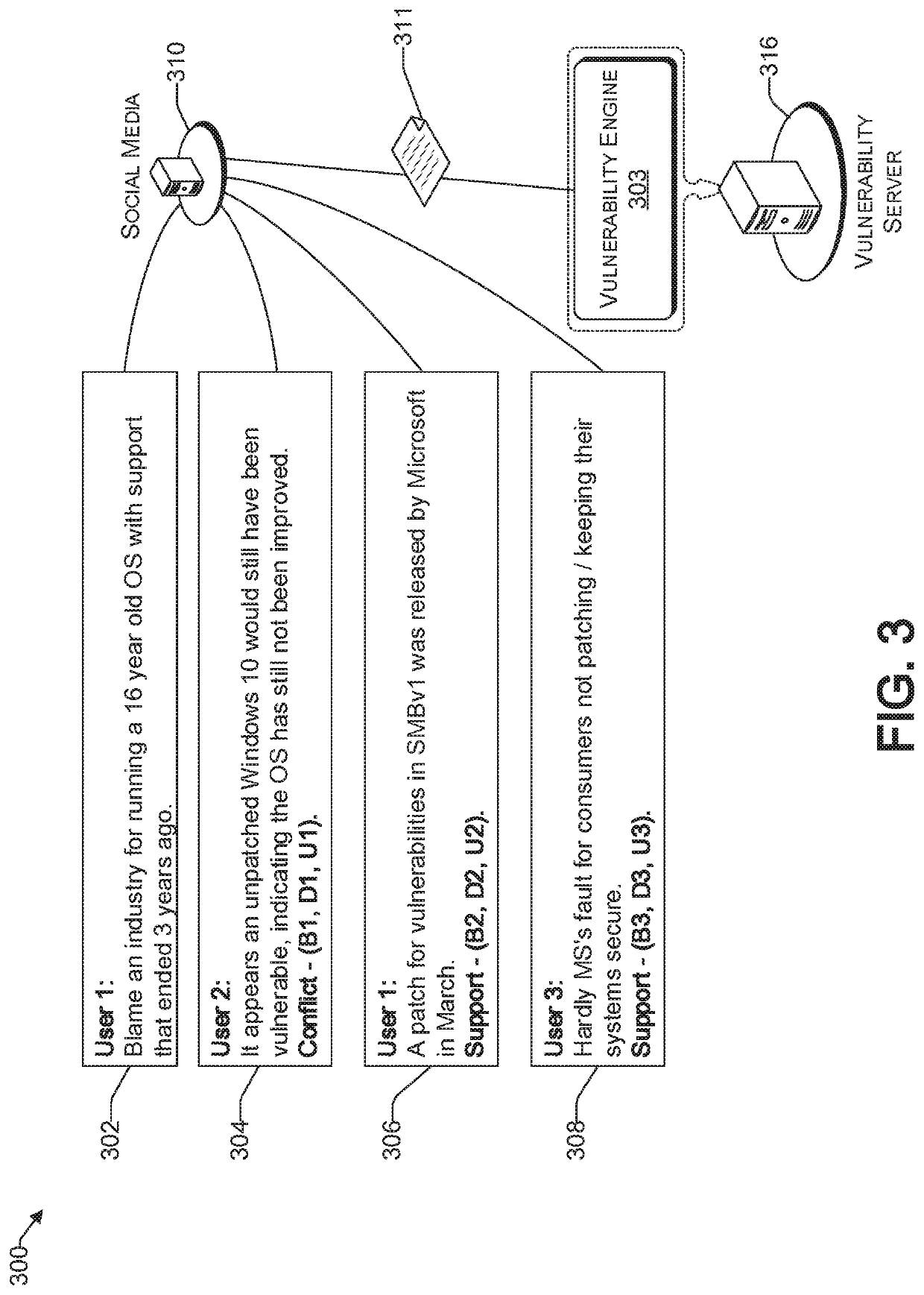Detecting a root cause for a vulnerability using subjective logic in social media
a social media and root cause technology, applied in the field of computer security, can solve the problems of traditional approaches lacking the ability to timely and resource efficiently identify vulnerabilities
- Summary
- Abstract
- Description
- Claims
- Application Information
AI Technical Summary
Benefits of technology
Problems solved by technology
Method used
Image
Examples
example architecture
[0019]FIG. 1 illustrates an example architecture 100 for identifying a vulnerability related to computing devices via social media. Architecture 100 may include one or more computing devices 102(1) to 102(N), one or more social media servers 110, a vulnerability database 112, a vulnerability server 116 having a vulnerability engine 103, and a cloud 120.
[0020]The network 106 allows various users to communicate with each other users (i.e., via their computing devices 102(1) to 102(N)) and various resources that are connected to the network 106, such as a social media server 110, a vulnerability database 112, vulnerability server 116 and the cloud 120.
[0021]The network 106 may be, without limitation, a local area network (“LAN”), a virtual private network (“VPN”), a cellular network, the Internet, or a combination thereof. For example, the network 106 may include a mobile network that is communicatively coupled to a private network, sometimes referred to as an intranet, that provides v...
example resolution phase
[0047]The resolution phase, which follows the training and monitoring phase, the root cause of the vulnerability is determined and / or notifications are sent out by the vulnerability engine 103 to provide alerts and / or remedies for the identified vulnerability. To that end, the social media communication that is deemed to be dependable is analyzed to find different possible root causes of the vulnerability. In one embodiment, subjective logic is used to take uncertainty and the veracity of the source into account. In this way, the uncertainty to a root cause of a vulnerability and / or to a solution thereof, can be ranked with respect to other root causes and / or solutions, respectively. I one embodiment, if a veracity score is below a predetermined threshold, then it is not deemed to be an identified root cause (and / or solution); rather, the vulnerability engine 103 may deem it as a possible intelligent guess in a trial and error scenario, which is pursued only when a more likely root ...
example process
[0059]With the foregoing overview of the example architecture 100 and conceptual diagrams of social media communication 200 and 300 that are related to a vulnerability, it may be helpful now to consider a high-level discussion of an example process. To that end, FIG. 4 presents an illustrative process 400 for identifying a vulnerability related to computing devices via social media. Processes 400 is illustrated as a collection of blocks in a logical flowchart, which represents a sequence of operations that can be implemented in hardware, software, or a combination thereof. In the context of software, the blocks represent computer-executable instructions that, when executed by one or more processors, perform the recited operations. Generally, computer-executable instructions may include routines, programs, objects, components, data structures, and the like that perform functions or implement abstract data types. The order in which the operations are described is not intended to be co...
PUM
 Login to View More
Login to View More Abstract
Description
Claims
Application Information
 Login to View More
Login to View More - R&D
- Intellectual Property
- Life Sciences
- Materials
- Tech Scout
- Unparalleled Data Quality
- Higher Quality Content
- 60% Fewer Hallucinations
Browse by: Latest US Patents, China's latest patents, Technical Efficacy Thesaurus, Application Domain, Technology Topic, Popular Technical Reports.
© 2025 PatSnap. All rights reserved.Legal|Privacy policy|Modern Slavery Act Transparency Statement|Sitemap|About US| Contact US: help@patsnap.com



